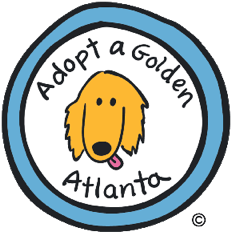Baby on the way? Be sure your pet is as ready as you are.
Whether you are about to have your first child or are bringing a new sibling into an established family and you have a dog, it is important to make introductions easy on all family members, especially your pet. Close supervision of your pet is critical. When children are involved, you cannot take chances. A few simple steps can ensure a smooth transition.
Before the baby arrives
- Neuter or spay your dog if you have not already done so.
- Attend to any medical concerns that may cause altered behavior in your pet.
- Review and refresh obedience training so you have control.
- Reinforce sit/stays for greetings if your dog jumps on people.
- Good heeling manners are crucial for future walks with a stroller.
- Address potential areas of concern: Is your dog spoiled, does he or she guard toys and food, is prey and chase driven, exhibits high energy and tends to be out of control, is sensitive about his or her body or a bit grumpy?
- Introduce your pet to as many children and babies as possible — in the park, on the street. If possible, invite friends with babies into your home. Have your dog under leash control. Dogs can get used to baby smells, sounds and sudden movements.
- If your dog’s lifestyle is going to change in any other ways, do so BEFORE your baby arrives!
- If possible, get your pet used to the new routine. A good doll to get is “Baby so Real” by ToyBiz, a 20$ doll that cries, flails her arms and moves her eyes. A few times a day, pretend to change the baby, sprinkle powder, lotion your hands so your dog gets used to the new smells.
- Get a tape of a baby crying and play it while your dog eats or during other happy times for your dog.
- Teach new commands that make life smoother: leave it, go to your bed, over here, wait.
Bringing baby home for the first time
- If possible, get your pet used to the new routine. A good doll to get is “Baby so Real” by ToyBiz (probably on line at ebay; or other realistic doll), a doll that cries, flails her arms and moves her eyes. A few times a day, pretend to change the baby, sprinkle powder, lotion your hands so your dog gets used to the new smells.
- Wrap a baby doll in a used blanket and be happy and praise your dog as he checks it out.
- When mom first arrives home, your pet will rush to greet her. Plan ahead. Have someone else hold the baby. Greet your dog calmly and affectionately.
- Do not show fear.
- Next, be calm and affectionate with your dog. You still love him and expect him to be calm, well behaved and affectionate with the new baby.
- If your pet is calm and in control, allow him to sniff baby all over.
- Begin on leash and, either in down/stay or in their place, allow your dog in the room when feeding, holding, caring for and changing baby. This helps clarify that it is indeed a baby and it will bring out the basic pack-oriented behavior of nurturing and protecting the young.
- Occasionally talk with your pet as you care for your baby.
- Do not isolate your pet from the pack or he will begin acting up to get attention.
- Give your dog special treats and pets when in the room with your baby and on good manners.
Dogs and children
- Warning signs: avoiding the child, snapping, growling.
- Actions to avoid:
- Punishing your pet’s normal (but unacceptable) behavior (i.e., guarding food).
- Raising your dog’s status above any other member of family.
- Sending mixed messages of ranking.
- Acting fearful when your pet is around your baby, thus transferring fear to him.
- Leaving your baby’s mouthing toys or diapers within your dog’s reach.
- Actions to incorporate
- Pay more attention to your child than to your dog to raise the pack position of your child.
- Respect your dog’s places and let no one (especially your child) infringe on his area.
- Never leave your child and pet unsupervised.
- Pay attention to your dog throughout the day, offering soothing “good puppy” pats during quiet time and as you interact with your child.
- Keep a jar of treats at the changing table. Talk gently with your dog and give him a treat for quiet attention as you change your baby.
- Be aware of the amount of time spent with your dog and your child. As perceived by dogs, your baby should get more, but do not exclude your pet from family involvement.
- Provide mental stimulation for your dog: playing ball, find the treat, etc.
- Be consistent.
- Train your dog to “go to your place” and down/stay.
- If your dog has difficulty maintaining position in “go to your place” or down/stay, use a temporary waiting station such as a crate.
- Find time to sit quietly with your pet as baby plays nearby (not in your dog’s private area).
- Speak quietly and calmly.
- Allow your dog to be present in nurturing parent/child interactions.
- Be calm and affectionate with your dog, letting him know you still love him and expect him to be calm, well behaved and affectionate with the new baby.
- You be the focus of your dog’s attention, not the baby — talking soothingly to him as you attend to baby.
What you must teach your child:
- Never disturb a dog when it is sleeping, eating or chewing.
- Be careful not to step, trip over or hurt a dog.
- Approach a dog slowly from the side, not behind or straight on.
- Pet nicely on it’s back or under the chin.
- No grabbing ears, tail, fur or skin.
- No screaming and running away.
- No tug of war games.
- No throwing self on dog.
- Avoid too much hugging.
- Avoid hugging from behind.
- Avoid any and all teasing.
- If a dog pulls back, do not approach him.
- Do not go near or inside of a dog’s private spaces.
Praising your pet
- Timing and tone of praise is critical. Praise must be warm, heartfelt and offered with a happy voice.
- Praise should be extended only when your pet has done something to deserve it. This can be just for being good at that very moment.
- Your pet should be praised when he is displaying the behaviors you want continued — being relaxed in the presence of children; sleeping quietly, relaxing or chewing a toy in his bed area; being gentle with family members.
With time, commitment and the steady application of love and praise, a child and the family dog (or dogs) will grow together, experiencing a bond that is unique and unceasing. It is a miracle to be sought after and treasured by parents everywhere.



